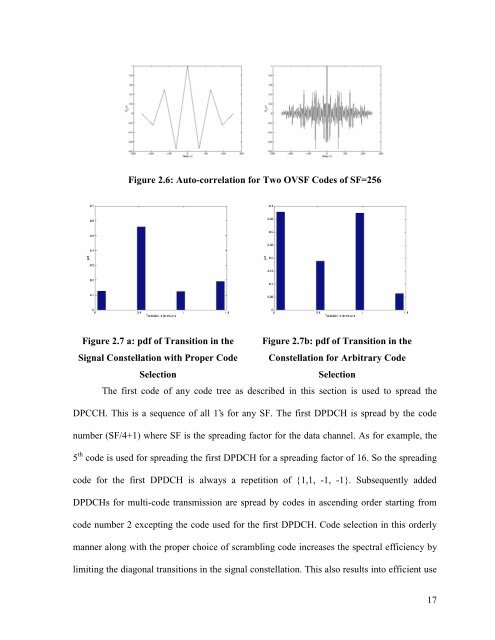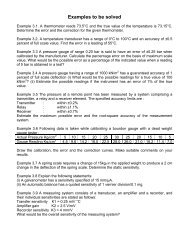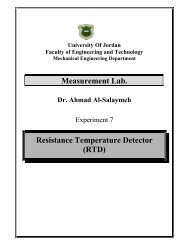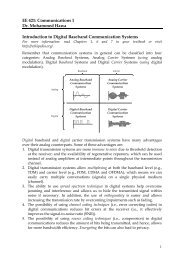Simulation of Third Generation CDMA Systems - Virginia Tech
Simulation of Third Generation CDMA Systems - Virginia Tech
Simulation of Third Generation CDMA Systems - Virginia Tech
Create successful ePaper yourself
Turn your PDF publications into a flip-book with our unique Google optimized e-Paper software.
Figure 2.6: Auto-correlation for Two OVSF Codes <strong>of</strong> SF=256Figure 2.7 a: pdf <strong>of</strong> Transition in the Figure 2.7b: pdf <strong>of</strong> Transition in theSignal Constellation with Proper Code Constellation for Arbitrary CodeSelectionSelectionThe first code <strong>of</strong> any code tree as described in this section is used to spread theDPCCH. This is a sequence <strong>of</strong> all 1’s for any SF. The first DPDCH is spread by the codenumber (SF/4+1) where SF is the spreading factor for the data channel. As for example, the5 th code is used for spreading the first DPDCH for a spreading factor <strong>of</strong> 16. So the spreadingcode for the first DPDCH is always a repetition <strong>of</strong> {1,1, -1, -1}. Subsequently addedDPDCHs for multi-code transmission are spread by codes in ascending order starting fromcode number 2 excepting the code used for the first DPDCH. Code selection in this orderlymanner along with the proper choice <strong>of</strong> scrambling code increases the spectral efficiency bylimiting the diagonal transitions in the signal constellation. This also results into efficient use17
















